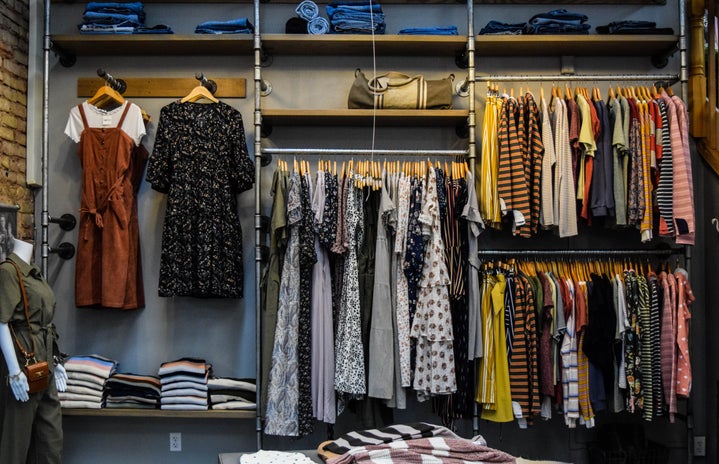We often take many factors into consideration when shopping for clothes. First, we have to find something we like, find our size, try it on, and even then we may not buy it. Rarely throughout this process do we think about where our clothes come from, which makes sense; it shouldn’t have to be something we think about.
However, many of the brands we buy are a part of “fast fashion.” They take trends from the runway and sell them to the general public for much less. Examples include brands such as Forever 21, Zara and H&M. This doesn’t initially come across as a bad idea. If anything, this is something that we as college students should be excited about—everyone likes saving money.
Unfortunately, brands are pretty willing to let anyone produce their products as long as they can meet a deadline. This has resulted in an industry that has produced widespread pollution and oppressive working conditions.
Environmental Impacts
Fashion is second only to the oil industry in being the dirtiest industry in the world.
Surprisingly, for what is often considered an innovative industry, there is very little variety in the fabrics that are used in fashion. Most of our clothes are made from polyester or cotton, neither of which is very sustainable.
Luckily, there has been some traction in tackling this issue. At the 2017 Copenhagen Fashion Summit last year, 12.5% of major fashion brands signed up to implement more sustainable practices in the production process by 2020. Adidas, in particular, has promised it will only use recycled plastic for their shoes by 2020.
Human Rights
Many of the factories meant to produce our clothes are often located in third world countries where women, and occasionally young children, make up the majority of the employees. Their socio-economic status makes them easy targets for exploitation and abuse by the men that are in positions of power within these facilities.
In 2015, the Modern Slavery Act was passed and was hailed as a large step towards ending labor exploitation. However, there continues to be a lack of transparency, as many of its guidelines are not mandatory to report.
“You have your reputation-sensitive brands opting in and disclosing their first and second-tier suppliers, but nobody is forcing them,” stated C&A Foundation communications manager Stephanie Klotz.
What can we do as consumers?
While it would be easy to say to just stop shopping these brands, it’s easier said than done. While there are ethical shopping brands, they are far and few in between. They are also typically far more expensive, making it unaffordable to most. However, there are still simple ways that you as a consumer can combat fast fashion.
Thrift shopping is an accessible option, especially nowadays with the adoption of online platforms such as ThreadUp and Depop
You can even try to make your clothes last longer by air drying them. This allows you to preserve your clothing or longer periods of time, therefore limiting how often you have to buy from fast fashion brands.
Most importantly, use your voice as a consumer. Brands won’t bother implementing better manufacturing practices unless they know that we care.



